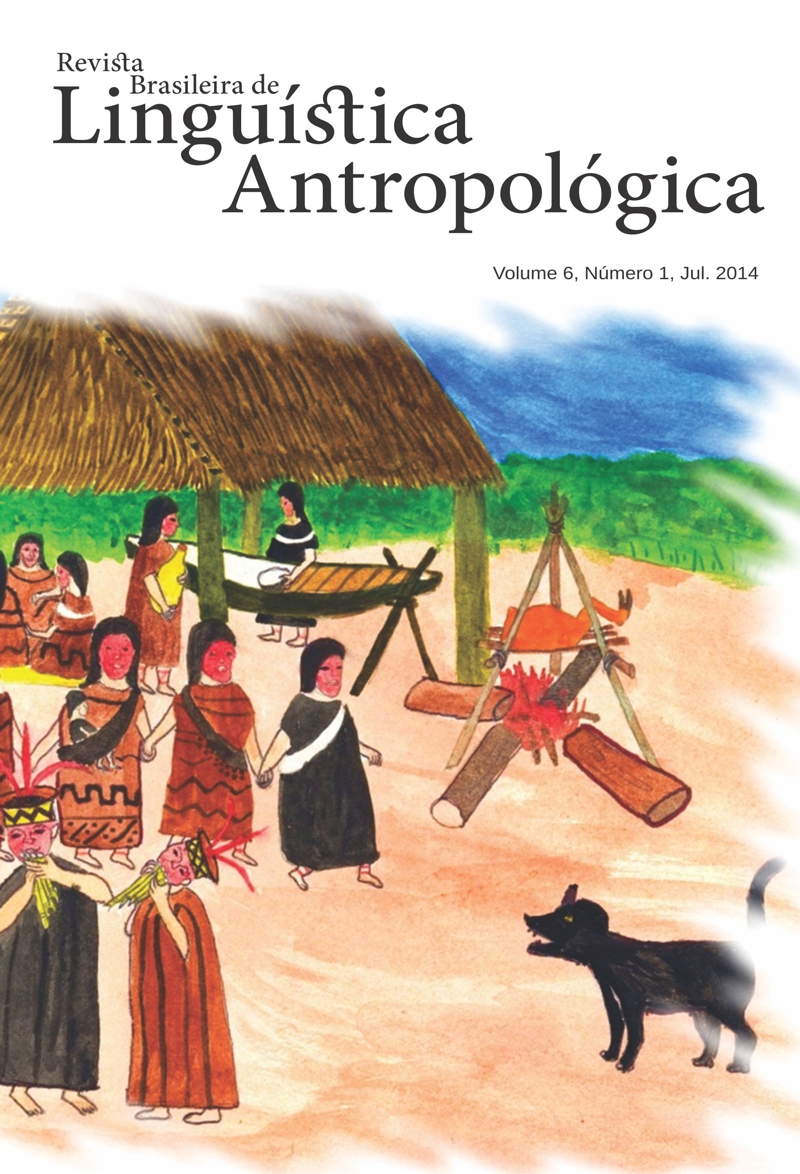Semantic bases and functions of noun categorization mechanism on South American indigenous languages
DOI:
https://doi.org/10.26512/rbla.v6i1.21056Keywords:
Indigenous languages. Noun classification. Gender. Morphology. Semantics.Abstract
Languages frequently present a grammatical system for categorizing the referents of nouns.
These mechanisms, whether the type of gender, class or nominal classifiers, are generally
based on semantic features and they exhibit assignment criteria which usually respond to
the meaning of the noun or certain properties of its referent. This paper proposes an analysis
contrasting nominal categorization systems in a number of indigenous languages of South
America. The objective of the research is to investigate (i) the semantic foundations
operating in the different languages, both those with traditional systems of gender and those
which add another procedure based on semantic features different of sex and animacy;
and (ii) the function of classifier mechanisms, particularly in cases where some process of
nominal derivation is verified.
Downloads
References
Adams, Karen L. y Nancy F. Conklin. 1973. “Toward a theory of natural classification”. Papers from the Annual Regional Meeting of the Chicago Linguistics Society 9:1-10.
Aikhenvald, Alexandra Y. 2000. Classifiers: A Typology of Noun Categorization Devices. Oxford: OUP.
Aikhenvald, Alexandra Y. 2007. “Typological distinctions in word-formation”. En Language Typology and Syntactic Description, editado por Timothy Shopen, 2da ed., Vol. III, 1-65. Cambridge: CUP.
Bybee, Joan. L. 1985. Morphology: A Study of the relation between meaning and form. Amsterdam: John Benjamins.
Corbett, Greville. G. 1991. Gender. Cambridge: CUP.
Croft, William. 1994. “Semantic universals in classifier systems”. Word 45, 2:145-171.
Cúneo, Paola. 2009. “El sistema de género en toba con especial referencia al léxico etnozoológico etnobotánico”. Revista Estudios en Ciencias Humanas 7. Facultad de Humanidades, Universidad Nacional del Nordeste.
Danielsen, Swintha. 2007. Baure: An Arawak Language of Bolivia. Leiden: CNWS Publications.
Derbyshire, Desmond C. y Doris L. Payne. 1990. “Noun classification systems of Amazonian languages”. En Amazonian linguistics: Studies in lowland South American languages, editado por Doris Payne, 243-272. Austin: University of Texas Press.
Dixon, Robert. M. W. 2004. The Jarawara Language of Southern Amazonia. Oxford: OUP.
Dixon, Robert. M. W. y Alexandra Y. Aikhenvald, eds. 1999. The Amazonian Languages. Cambridge: CUP.
Dryer, Matthew. 2007. “Noun phrase structure”. En Language Typology and Syntactic Description, editado por Timothy Shopen, 2da ed., Vol. III, 151-205. Cambridge: CUP.
Eberhard, David. 2009. Mamaindê Grammar. A Northern Nambikwara language and its cultural context. Utrecht: LOT.
Fabre, Alain. 2002. “Algunos rasgos tipológicos del Kamsá (Valle de Sibundoy, Alto Putumayo, sudoeste de Colombia) vistos desde una perspectiva areal”. En Current Studies on South American Languages, editado por Mily Crevels, Simon van de Kerke, Sérgio Meira y Hein van der Voort, 169-198. Leiden: CNWS Publications.
Fernández Garay, Ana. 2007. “El género en tehuelche”. Baciyelmo 2: 60-77.
Gómez-Imbert, Elsa. 1986. De la forme et du sens dans la classification nominale en Tatuyo. Paris: ORSTOM.
Gómez-Imbert, Elsa. 2000. “Introducción a las lenguas del Piraparaná (Vaupés)”. En Lenguas indígenas de Colombia: una visión descriptiva, editado por María Stella González de Pérez y María Luisa Rodríguez de Montes, 321-356. Santafé de Bogotá: Instituto Caro y Cuervo.
Haspelmath, Martin. 2002. Understanding Morphology. London: Arnold.
Jara, Fabiola. 1996. “La miel y el aguijón. Taxonomía zoológica y etnobiología como elementos en la definición de las nociones de género entre los andoke (Amazonía colombiana)”. Journal de la Société des Américanistes de Paris 82: 209-258.
Krute, Laurence D. 1988. Piaroa nominal morphosemantics. Ph.D. diss., Columbia University.
Landaburu, Jon. 1993. “Quand le nombre est un genre: en Andoque et en quelques autres langues amérindiennes de Colombie”. Faits de Langue 2: 145-159.
Millán Chivite, Fernando. 1994. “Tipología semántica de la oposición de género no sexuado en español”. CAUCE (Revista Internacional de Filología y su Didáctica) 17: 53-75.
Olza Zubiri, Jesús y Miguel A. Jusayú. 1978. Gramática de la lengua guajira. Caracas: Universidad Católica Andrés Bello, Centro de Lenguas Indígenas.
Payne, Thomas. 1997. Describing Morphosyntax: A guide for field linguists. Cambridge: CUP.
Seifart, Frank. 2005. The structure and use of shape-based noun classes in Miraña. Nijmegen: Max Planck Institute for Psycholinguistics.
Trudgill, Peter. 2002. Sociolinguistic Variation and Change. Washington, DC: Georgetown University Press.
Downloads
Published
How to Cite
Issue
Section
License

This work is licensed under a Creative Commons Attribution 4.0 International License.
Authors who publish in RBLA agree to the following terms:
a) Authors maintain the copyright and grant the journal the right of first publication, and the work is simultaneously licensed under the Creative Commons Attribution License, which allows the sharing of the work with recognition of the authorship of the work and initial publication in this journal.
b) Authors are authorized to assume additional contracts separately, for non-exclusive distribution of the version of the work published in this journal (eg, publish in an institutional repository or as a book chapter), with recognition of authorship and initial publication in this journal.
c) Authors are allowed and encouraged to publish their work online (eg, in institutional repositories or on their personal page) at any point before or during the editorial process, as this can generate productive changes, as well as increase impact and citation of the published work.







